Recent Articles
Popular Makes
Body Types
2021 Subaru Crosstrek Road Test and Review
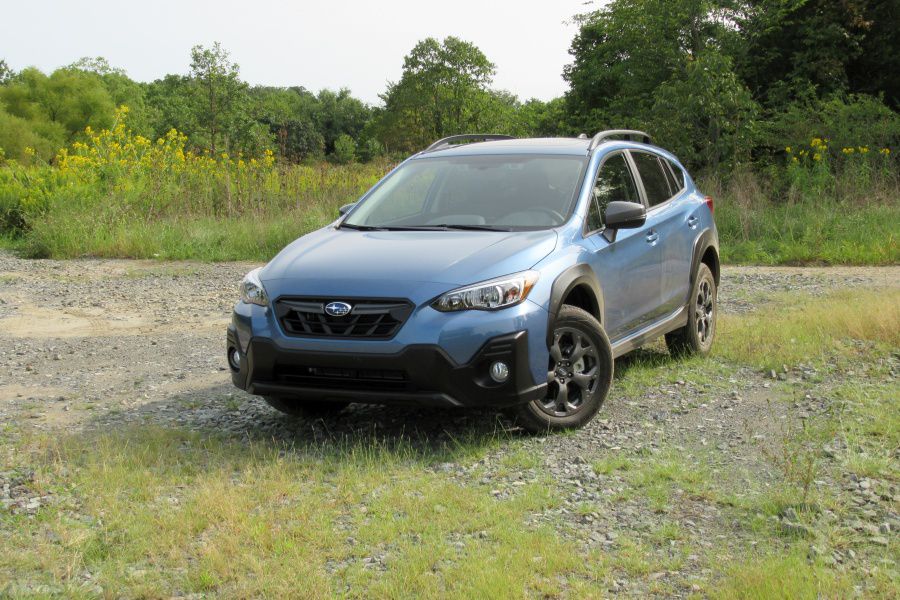
2021 Subaru Crosstrek Sport ・ Photo by Brady Holt
When automotive journalists talk about “fun” cars, we’re typically talking about how they drive. These are cars with beautifully precise handling or ferociously quick acceleration. But sometimes, the fun is less about the car itself — it’s about where the car can take you. And that’s where Subaru comes in.
Subaru offers famously capable vehicles with high ground clearances and standard all-wheel drive. Subarus are engineered to take you safely and comfortably where you need to go, whether you’re commuting to work or picking your way toward an isolated campground or trailhead. That focus trickles down into Subaru’s smallest and least expensive crossover, the Crosstrek. And to make the car more pleasant to drive by traditional auto-journalist metrics, the 2021 Subaru Crosstrek is now offered with a bigger engine as well as several other enhancements. Let’s go over the details on this newly updated subcompact crossover, which starts at $22,245.
What's New
The headline news for the 2021 Subaru Crosstrek is its new 2.5-liter engine, which is standard on the upper-level Sport and Limited trim levels. Subaru borrowed this engine from larger Subarus: the bigger, heavier Forester, Legacy, and Outback. The base and Premium trim levels continue to use a 2.0-liter engine.
While this engine has gotten most of the attention, it’s not the only change for 2021. The Sport model is all-new this year, and it’s the most rugged Crosstrek yet. In addition to the larger engine, it has exclusive bumpers and fenders for greater off-road protection; exclusive dual-function X-Mode to enhance the all-wheel-drive system; and exclusive water-repellant leatherette upholstery and yellow-green interior accents. Meanwhile, all Crosstrek models see tweaks to their styling, suspension, and steering, along with a new lane-centering function for the adaptive cruise control.
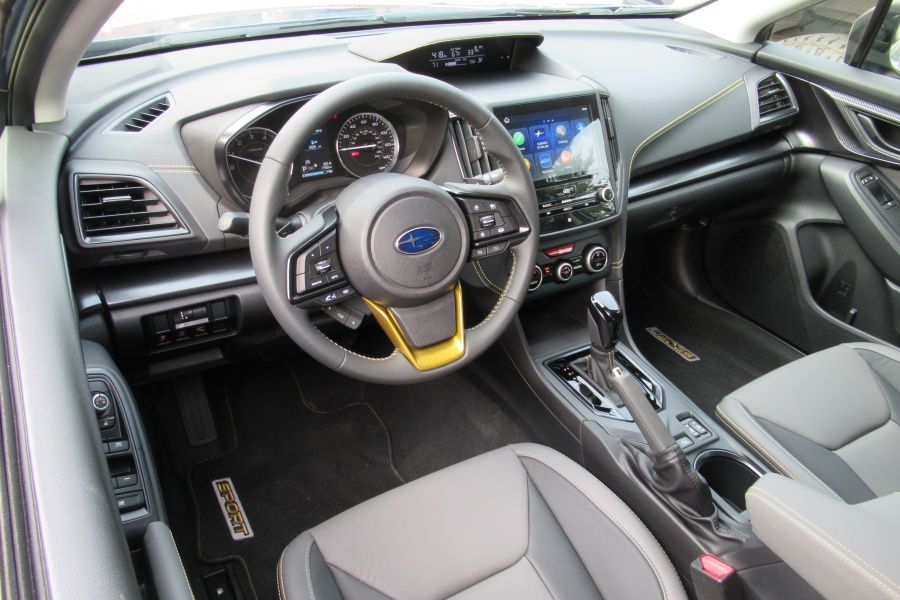
Photo by Brady Holt
Stronger Acceleration
When the current-generation Crosstrek debuted as a 2018 model, its 2.0-liter four-cylinder engine was a liability. Making 152 horsepower and 145 lb-ft of torque, it provided merely adequate acceleration, and it droned loudly when you tried to achieve that. That’s not so unusual in the subcompact crossover segment, but there was room for improvement.
And that’s what the 2021 Crosstrek brings. The newly available 2.5-liter engine makes a healthier 182 hp and 176 lb-ft of torque. It’s still not exactly quick or quiet, but it’s better in both ways — cutting about 1.5 seconds off the Crosstrek’s 0-60 time and making a little less ruckus. Even fuel economy is similar, with EPA ratings of 28 mpg in the city, 33 mpg on the highway, and 30 mpg overall with the 2.0-liter, and 27 mpg city/34 mpg highway/29 mpg overall with the 2.5. Both the 2.0-liter and 2.5-liter Crosstreks can use a continuously variable automatic transmission, known as a CVT; in our 2.5-liter test vehicle, the CVT kept revs down around 2,000 rpm even at 80 mph. The 2.0-liter is also available with a six-speed manual transmission.
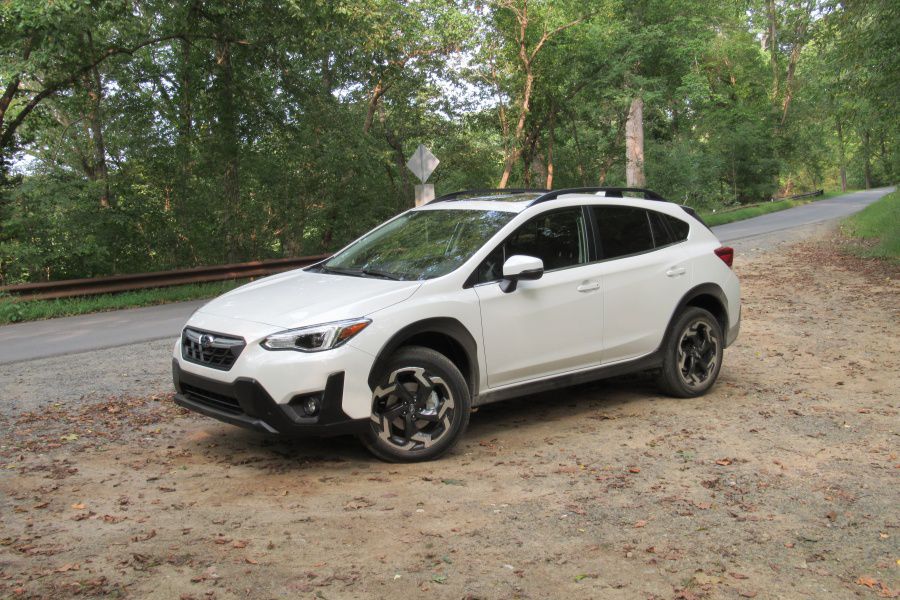
Photo by Brady Holt
Comfortable Anywhere
The Crosstrek’s ride quality is a key strong point. Subaru encouraged us to hustle the vehicle along unpaved, sometimes badly pitted roads, and the Crosstrek handled it without breaking a sweat. Some subcompact crossovers are just economy cars on stilts, feeling out of their element once you’re off smooth pavement. (Granted, the Crosstrek is also an economy car on stilts — Subaru created it by adding ground clearance and protective cladding to its Impreza hatchback — but the Impreza is also a hardier starting point than most small cars.)
The roads were dry during our test, but we’d also trust Subaru’s symmetrical all-wheel-drive if those steep dirt roads turned muddy or snowy. The Sport model also includes specific AWD settings for snow/dirt and deep snow/mud, but all Crosstreks include hill-descent control. This year’s tweaks to the suspension and steering don’t turn the Crosstrek into a sporty vehicle on the pavement, though. When you encounter a winding road, it remains more of a transportation tool than a fun driver’s car. It’s maneuverable and easy to drive for an SUV, but don’t look for sharp steering or high handling limits. Nor is it especially quiet.
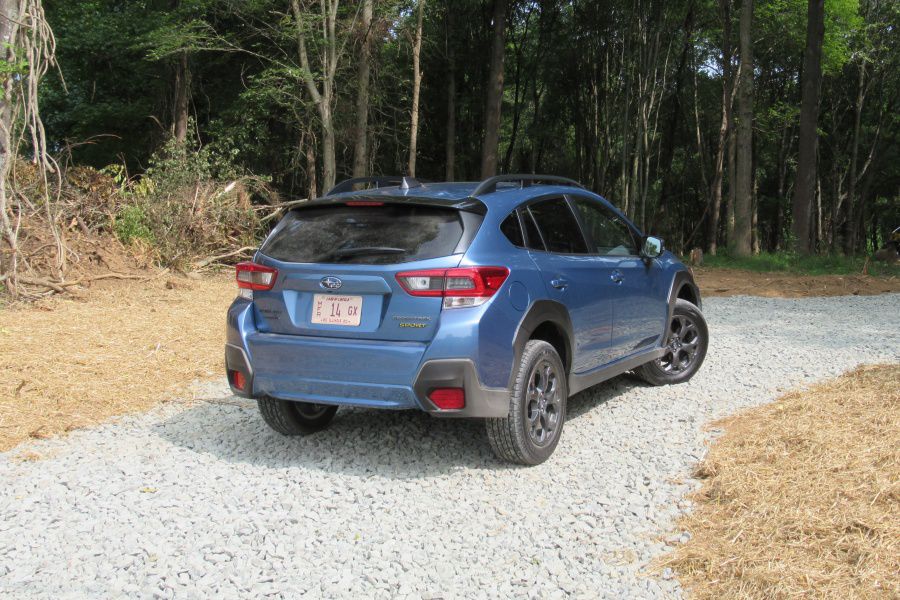
Photo by Brady Holt
Spacious Seating
Many subcompact crossovers have cramped seating accommodations, especially in the backseat. Not the Crosstrek. Well-shaped, supportive front seats offer all-day comfort, though we wish power-adjustability were more widely available. Some buyers might also prefer a more SUV-like seating position, since the Crosstrek’s high ground clearance doesn’t address its hatchback-like proportions. Also, it lacks the classically expansive visibility of Subaru’s larger Forester.
The backseat, meanwhile, is a class leader. Adults don’t just fit back there; they can stretch out and relax, with plenty of legroom and headroom. A fold-down rear armrest is restricted to the top Limited model, an unusual omission. Still, the cushion is well-shaped and high off the floor to provide generous comfort and support. That said, when you have filled up the Crosstrek with people, cargo room is just 20.8 cubic feet. That’s class-competitive on paper, but it’s definitely tight if those four or five people are trying to bring luggage or gear with them. You can fold down the rear seat to get 55.3 cubic feet, or you can carry things outside the car using its standard roof racks or its 1,500-pound towing capacity.
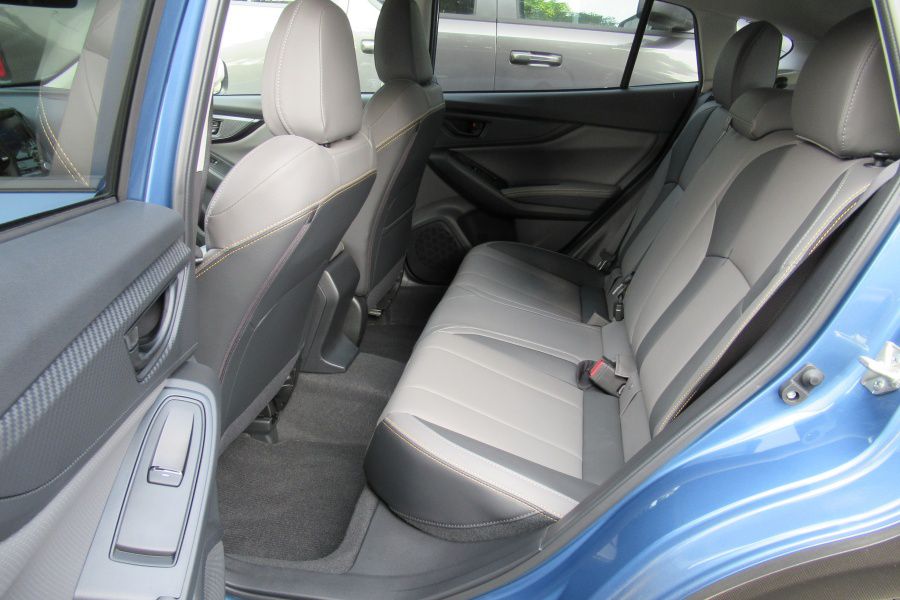
Photo by Brady Holt
User-Friendly Controls
The Crosstrek doesn’t have a lot of pizzazz inside. Subaru dresses up the straightforward design with yellow-green dashboard and steering wheel accents on the Sport model and, new this year, orange-tinged black leather on the Limited. We suspect some buyers will wish these cues were optional, especially the Sport’s yellow-green, which clashed with the gentle blue exterior of our Sport test vehicle.
Still, pizzazz or no, the Crosstrek is undeniably user-friendly. Big, simple buttons and knobs prevail. Our two test vehicles included the available 8-inch touchscreen infotainment system rather than the small 6.5-inch unit that’s standard on most Crosstreks, but even the base system supports both Android Auto and Apple CarPlay smartphone integration. And all but the base model include a Wi-Fi hotspot. The top Sport and Limited trim levels include a generous four USB ports, but the Premium includes just two and the base model has only one. There’s no wireless smartphone charger, either.
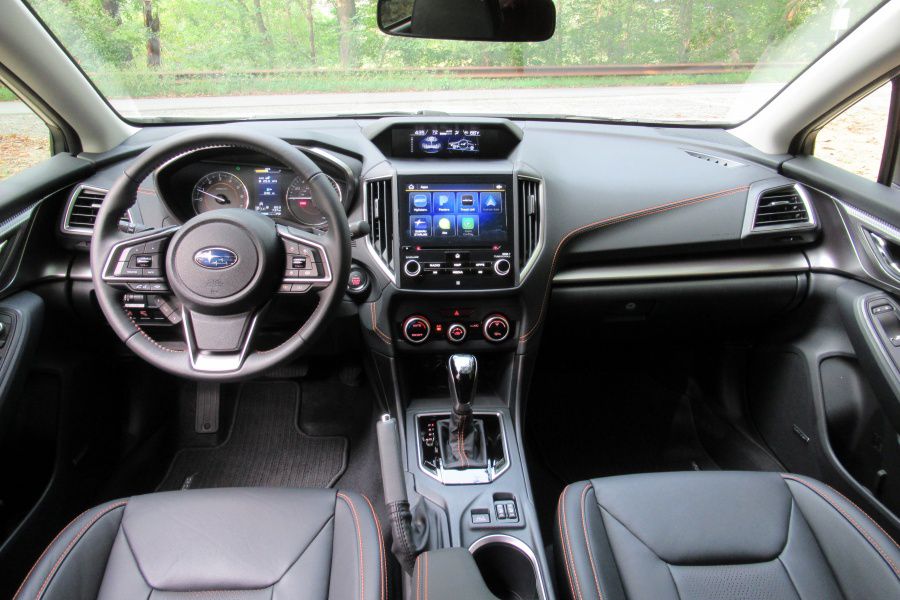
Photo by Brady Holt
Safety Comes Standard
Unless you choose the manual transmission, every Crosstrek comes standard with Subaru’s “EyeSight” suite of advanced safety and driver-assistance features. Set a cruising speed and the Crosstrek will handle the accelerator, brakes, and steering to keep you from drifting out of your lane or coming too close to slower-moving traffic. The car can also slam the brakes to avoid or mitigate a forward collision, while the top Limited trim has the same capability when you’re in reverse.
Blind-spot monitoring with a rear cross-traffic alert is a little harder to come by, though. The base Crosstrek doesn’t offer it, and it’s part of pricey options packages on the Premium and Sport (standard on the Limited). Still, this is a comprehensive tech suite for a subcompact crossover. The Crosstrek is also a Top Safety Pick from the Insurance Institute for Highway Safety and earned five out of five stars overall from the National Highway Traffic Safety Administration.
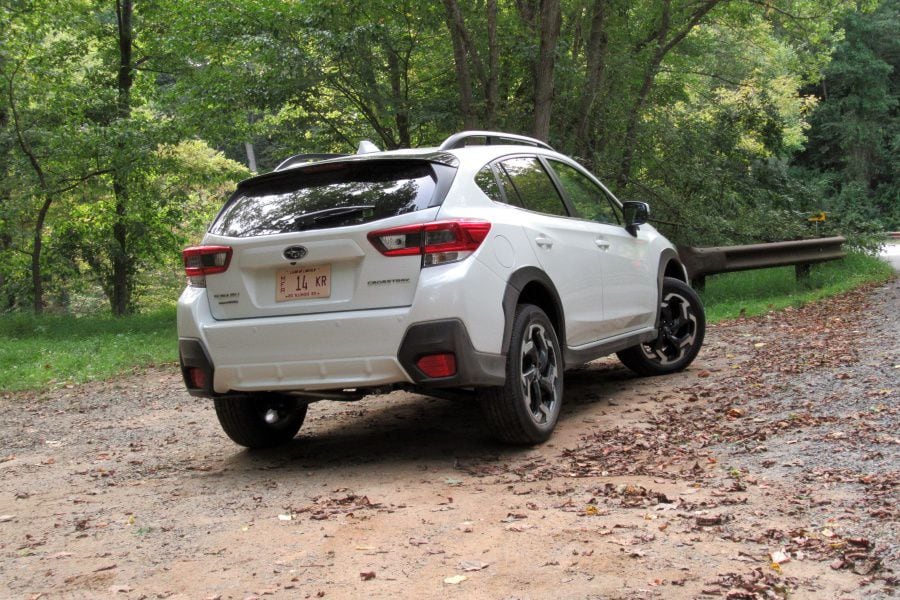
Photo by Brady Holt
Models and Prices
The base Crosstrek starts at $22,245, a decent price for a subcompact crossover. You have to pay an extra $1,350 for an automatic transmission, but all-wheel-drive — a similar or greater expense on many competitors — comes standard. Standard equipment includes 17-inch alloy wheels, automatic climate control, and the 6.5-inch infotainment screen. The Premium, $23,295, is dressed up with fog lights, body-colored side mirrors, and a leather-wrapped steering wheel; it also adds a second USB port, heated front seats, satellite radio, a Wi-Fi hotspot, and six speakers instead of four.
Step up to the Sport for $26,495, and you get the CVT as standard equipment (cutting its price gap over the Premium to $1,850) along with the bigger 2.5-liter engine. Other add-ons include leatherette upholstery, push-button starting, rear USB ports (for a total of four), automatic high beams, and more advanced AWD settings. The Limited, $27,995, brings genuine leather, 18-inch wheels, a crisper dashboard display, a fold-down rear armrest, rear automatic braking, and several features that are optional on some lower trims: the 8-inch touchscreen, blind-spot monitoring, and a power driver’s seat. It loses the Sport's dual X-Mode AWD settings, though.
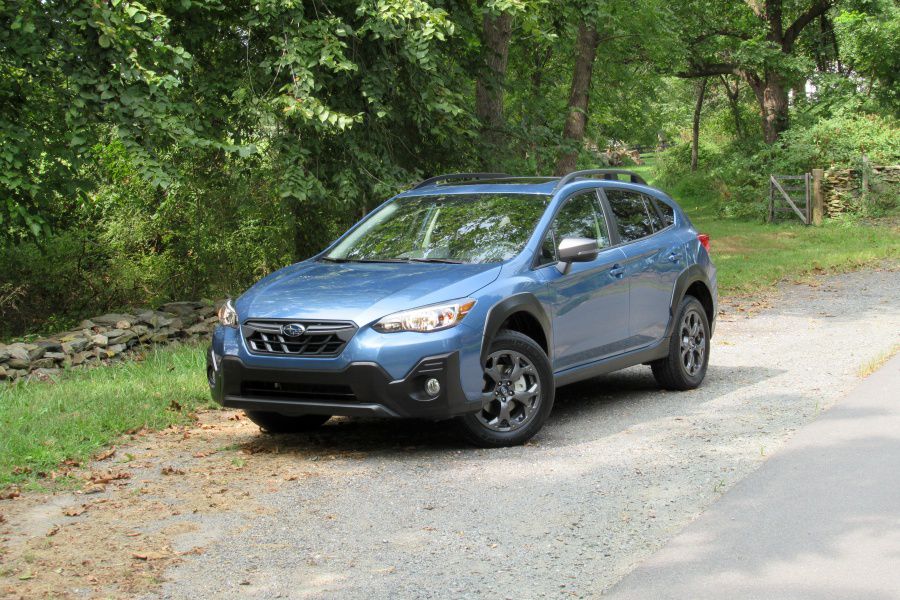
Photo by Brady Holt
Competitors to Consider
When you’re looking for a small crossover, choices abound. One well-rounded head-turner is the new 2021 Kia Seltos, which trumps most competitors for passenger and cargo space, on-road driving dynamics, and fuel economy — all at low prices. That said, the Crosstrek has a smoother ride and promises more capability when you do venture off paved roads, and it’s projected to hold its value better than its competitors.
For more on-road driving enjoyment than the Crosstrek or even the Seltos, the Hyundai Kona is another leader. Funky-looking and fun to drive, the Kona has agile handling and an available zippy turbocharged engine, at excellent prices. It comes up short for interior space and ground clearance, though. When off-pavement travels are a top priority, the Crosstrek’s closest competitors are the smaller Jeep Renegade and larger Jeep Compass. However, the latter is comparatively cramped, both can get expensive quickly, and neither gets great gas mileage. Also consider upgrading to the more spacious Subaru Forester, or giving up a couple inches of ground clearance and the 2.5-liter engine option to get a less expensive Subaru Impreza.
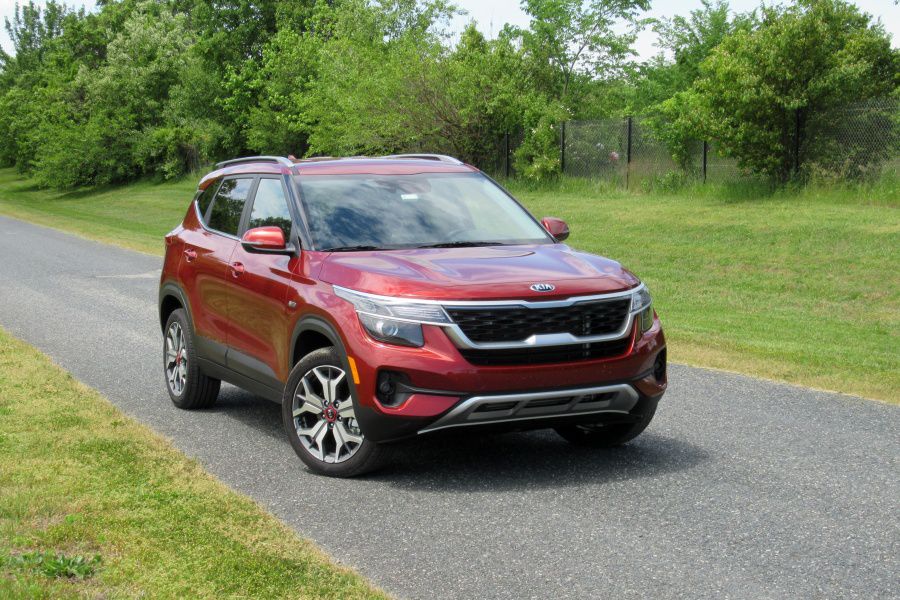
Photo by Brady Holt
Outdoor Adventure Tool
To Subaru, the Crosstrek isn’t just another subcompact crossover. It’s an “outdoor adventure tool,” a piece of gear that you pull out of your garage when it’s time to hit the trails or go out on the water. And since it’s more rugged than most of its competitors, it’s well suited for that sort of task. It’s also a leader if you live on a road whose poor condition would endanger a more fragile vehicle.
If you’re looking for an on-road crossover, there are strong competitors to consider: models that offer superior acceleration, refinement, on-road handling, cargo space, style, or affordability. But even if you’re just looking for a commuter car, the Crosstrek’s comfortable seating, economical engines, compliant ride, and excellent safety record are reasons to keep it in contention. Plus, if you ever did feel inclined to take an outdoor adventure, your Crosstrek would be ready to serve you — especially if you get the new 2.5-liter engine.
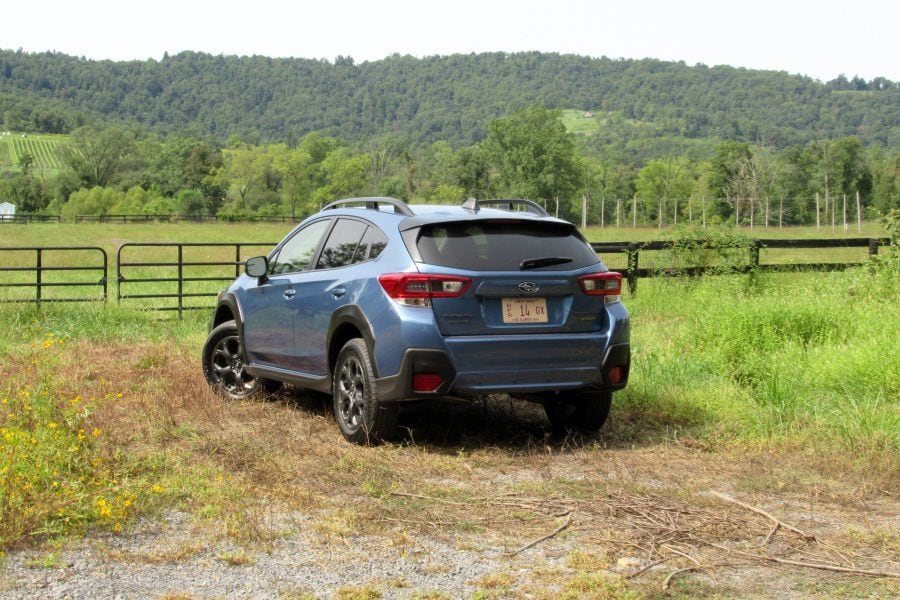
Photo by Brady Holt